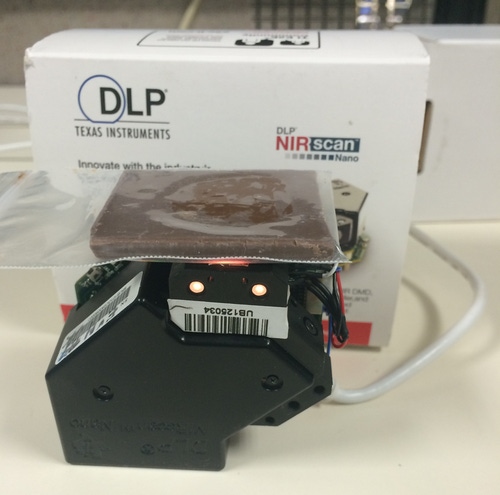November 2, 2016

I hate waste. Maybe it was the way I was raised by my ultra-frugal parents (my mother still darns socks to extend their use) or perhaps it's the environmentally conscience part of me (my kids attend/attended the nationally acclaimed Environmental Charter School). Either way, thinking about how to reduce/reuse/recycle is something that is engrained in me.
That is why I am so enamored with two potentially game-changing technologies that MEMS & Sensors Industry Group Members TI DLP Products and Analog Devices recently developed. Perhaps the reduction of waste was not on their minds when they created these technologies, but it's on mine, and I love the idea that two of my favorite consumables -- tomatoes and chocolate -- inspired such innovation.
Tomatoes are tricky on a number of levels. For starters they are a fruit, and each tomato has a distinct sugar and acidity content. Some are great for eating off of the vine, and others are best used for a sauce. I didn't appreciate the intricacies of tomato creation until I learned more about Analog Devices' Internet of Tomatoes project.

The DLP NIRscan Nano EVM in action.
(Source: TI DLP Products)
In concert with local New England farmers (and with the help of a co-creation project launched at the 2014 MEMS & Sensors Executive Congress), Analog Devices engineers have developed a "platform-based sensing, processing, and communications solution that can precisely measure environmental data - humidity, temperature, and ambient sunlight -- which contribute to growing a delicious tomato."
Analog Devices' "Fenway" platform supports the environmental sensing of temperature, humidity, and ambient light. The optical device used to measure the acids, sugar, and salt is the SCiO Spectrometer, developed by Analog Devices in collaboration with Consumer Physics Inc. While the potential uses for the spectrometer are many, this particular Internet of Things application -- which is a "complete sensor-to-cloud solution" -- speaks to my waste-not side. Analog Devices claims that its Internet of Tomatoes project, "will empower farmers to make better decisions throughout the growing cycle, ultimately improving quality, economic, and environmental outcomes." That's a practical example of sensors effecting positive change for people.
 Securing the Internet of Things. Today's IoT devices are under increasing attack. Device manufacturers and embedded software designers must be vigilant if they are to provide a secure system for applications to do their work. Learn more about securing IoT devices and applications in the Connected Devices track at ESC Silicon Valley. December 6-8, 2016 in San Jose. Register here for the event, hosted by Design News’ parent company UBM.
Securing the Internet of Things. Today's IoT devices are under increasing attack. Device manufacturers and embedded software designers must be vigilant if they are to provide a secure system for applications to do their work. Learn more about securing IoT devices and applications in the Connected Devices track at ESC Silicon Valley. December 6-8, 2016 in San Jose. Register here for the event, hosted by Design News’ parent company UBM.
The team at TI DLP Products demoed DLP NIRscan Nano evalutation module (EVM) for me at CES 2016, and it's been on my mind ever since. They are using TI DLP technology to determine a chocolate's sugar content -- as well as for more critical analyses such as detecting the chemical compounds in a pharmaceutical to determine if it's real or fake. According to TI DLP Products: "The EVM is an evaluation tool to help developers quickly design spectrometers and chemical analyzers using DLP chips. It uses DLP technology in conjunction with a single element InGaAs detector to deliver high-performance measurements in a portable form factor that is more affordable than expensive InGaAs array detectors or fragile rotating grating architectures. The wide NIR-window transmittance also makes it useful in a variety of industries such as agriculture, petrochemicals and health care."
READ RELATED ARTICLES ON DESIGN NEWS:
Imagine a world where you can utilize a small device like Analog Devices' SCiO Spectrometer or TI DLP Products' EVM to determine if the produce on the shelf at the market is ripe, spoiled, or even tasty. This time of the year, my family and I love fresh peaches. Fresh peaches, not peaches that have become mushy or aren't ripe; they have to be "just right." With the kind of technology developed by TI DLP Products and Analog Devices, I may soon have the ability to pick the right peach, enjoy the perfect oyster, ensure that my medicine is safe, and so much more. It's truly endless where this technology can take us. Where do you want to reduce waste? If I say tomato, what do you say?
Karen Lightman is executive director of MEMS Industry Group (MIG), the trade association comprising more than 160 companies advancing MEMS and sensors across global markets.
About the Author(s)
You May Also Like



